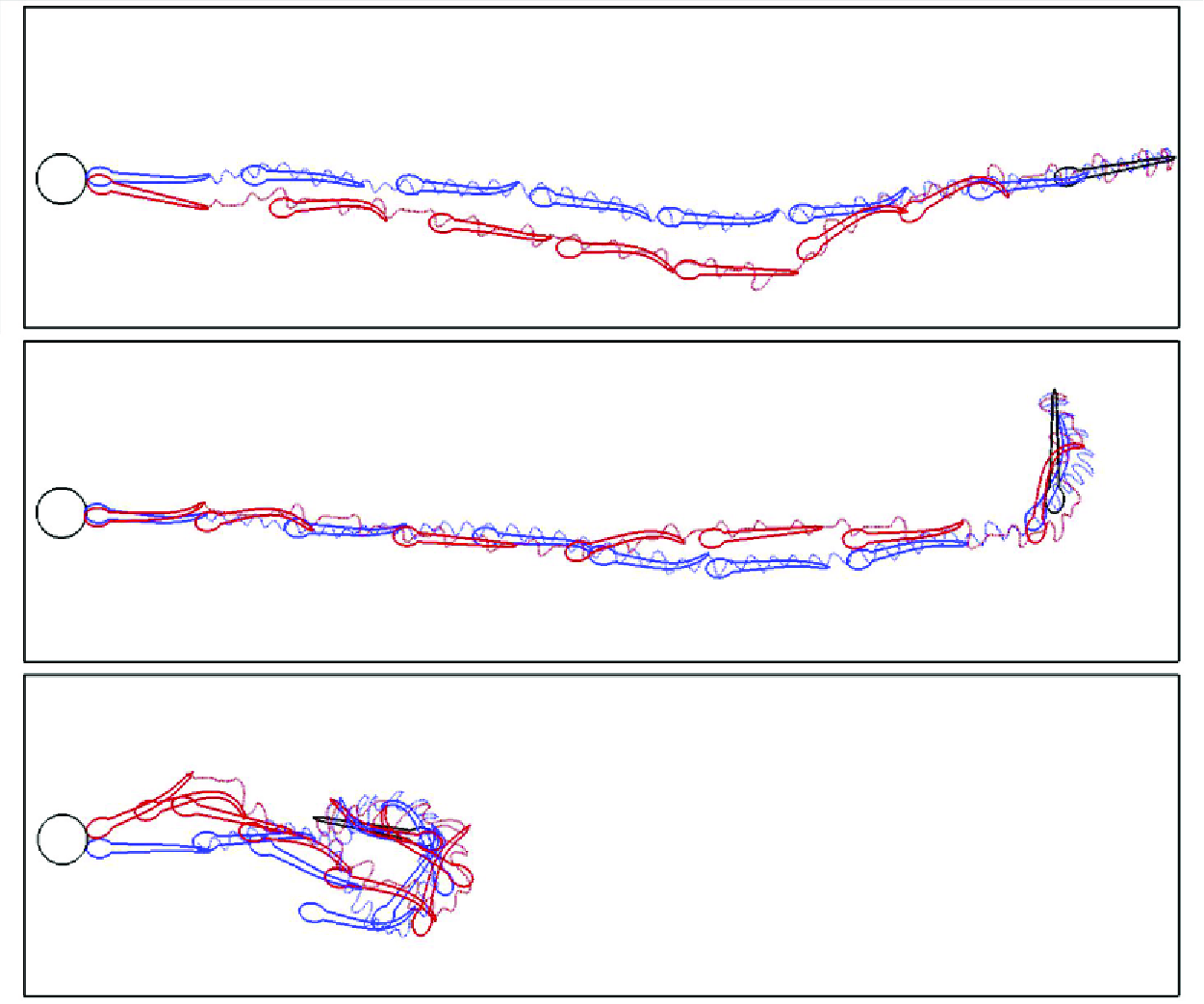No CrossRef data available.
Published online by Cambridge University Press: 10 March 2025

Intermittent swimming behaviour is commonly observed in larval zebrafish, often attributed to energy-saving mechanisms. In this study, we utilize a hybrid approach combining deep reinforcement learning and the immersed boundary–lattice Boltzmann method to train a larval zebrafish-like swimmer to reach a target with minimized energy expenditure. We find that when the tail-beat period is fixed, continuous swimming emerges as the optimal strategy. However, when the tail-beat period is allowed to vary, intermittent swimming proves superior in energy performance, achieved through reductions in tail-beat amplitude and frequency. Our detailed analysis reveals that intermittent swimmers employ rapid backward tail flicks to attain high speeds, coupled with slower forward tail flicks and coasting phases to conserve energy. Furthermore, we derive scaling laws governing the swimming performance of trained fish. These results offer valuable insights into the intermittent swimming patterns of fish, with implications for understanding bio-inspired locomotion and informing the design of energy-efficient aquatic systems.
Y. Zhu and L. Kang contributed equally to this work and should be considered co-first authors.